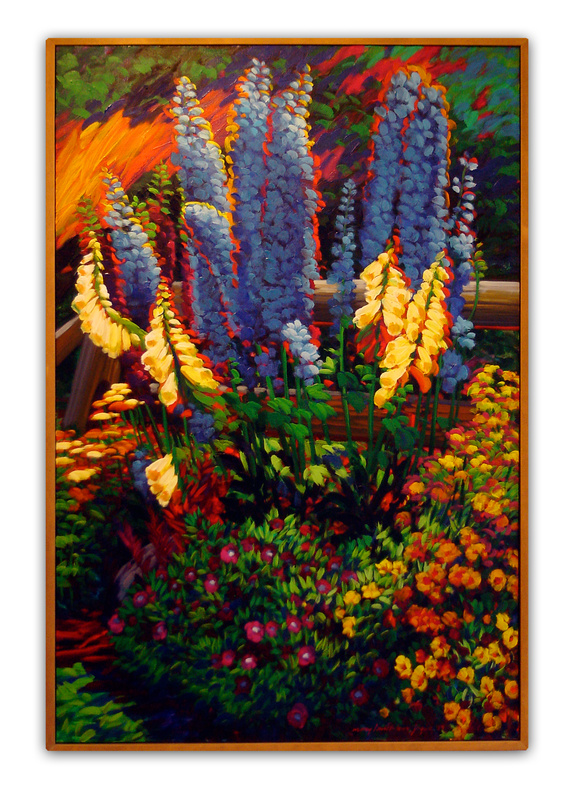Many of my favorite artists such as Matisse, Van Gogh, the Fauvists and Kandinsky were bold colorists. Color is a surprisingly difficult element of painting. The brighter it gets, the harder it is to handle.
Mary Louise Town Jaqua, the featured artist in “Think Spring” at Freeport’s Wonderful Gallery, paints with bold colors. Jaqua is an experienced painter, and her confidence shows in the energetic rhythms of her brushwork.
Her florals and flower garden landscapes bristle with intense colors, and she seems quite aware of the traps on either side: working the oil paint too much makes ugly brown mud; not rendering enough detail makes the paintings look like slapdash afterthoughts.
Van Gogh painted in oils on wet oil paint. Looking at his work, you might think that oil paint wants to remain in thick, buttery strokes that fly from the brush onto the canvas. It doesn’t. It’s one thing to paint thin layers of oil over dried layers, but pushing wet oil paint around the surface of a canvas takes incredible skill to do well.
Jaqua never errs on the side of mud, and rarely slips on the side of insufficient rendering. Her best works, such as “Lilacs,” exude dewy weights and decent volumes. She has the simple but effective sense to base her floral forms on hot colors and set those in relief against cool shades.
These lilacs shift from red and pink to yellow and pink. They are set off by deep greens and blues. Near the top, the over-ripe flowers fight a bit with warmer (and flatter) green leaves and acrid yellow highlights, but the overall effect is just luscious enough to feel successful.
Jaqua’s “Hydrangeas by the Fence” reveals much about her approach to color. To set the flowers apart, she paints around the hot yellow flowers with solid colors. The approach is most noticeable when cool colors surround the warmer tones. The effect of the approach often works against itself with thick, single-color outlines flattening discreet forms rather than exuding sculptural depth. Yet in the lower left of the canvas, Jaqua’s flicked red strokes carve leaves from a green field with a pleasantly light touch.
An earlier painting (upstairs at the gallery) reveals that Jaqua is in the process of resolving problems presented by this new series. The forms are much flatter, and Jaqua’s usually bold strokes tiptoe around larger, straighter forms to which she over-committed too early in the process. In contrast, her more recent “Sunlit Delphineums” represents a step forward for her in terms of space and stroke.
In the end, Jaqua doesn’t come to terms with the issue of decoration in her paintings. Are they about decoration, or are they decorative?
While they are bold in color and mark-making, her paintings waffle between featuring surface or featuring image – and they suffer for it.
This mirrors the general problem I have with the Wonderful Gallery. It feels like it’s focused on decorative work while wanting to be something else. While I like some of the art – such as Michael Costello’s terrific pastels – the gallery has an uncomfortable feel. It’s tough to tell if the gallery is serious about art, dedicated to decoration, or focused on art geared toward tourists.
For example, while the show “Think Spring” is based on six paintings by Jaqua, it also includes a small decorative collage by Heidi Makris and an underwhelming still life with vase and flowers by gallery owner Andrea Rouda. (The chair and end table she painted, however, are delightfully decorated.) Jaqua’s work would stand better on its own.
Many people are against the idea of gallery owners showing their own work because of the conflict of competing with the other artists. In addition, often they just can’t see their own work with the same eye – which seems to be the case here.
Freelance writer Daniel Kany is an art historian who lives in Cumberland. He can be contacted at: dankany@gmail.com
Send questions/comments to the editors.



